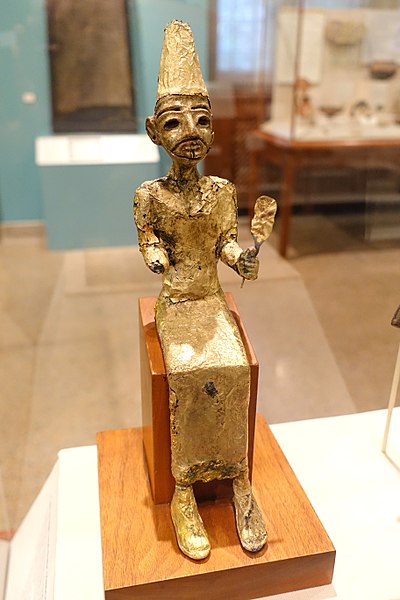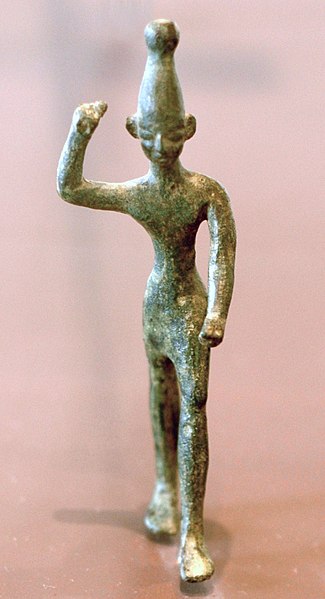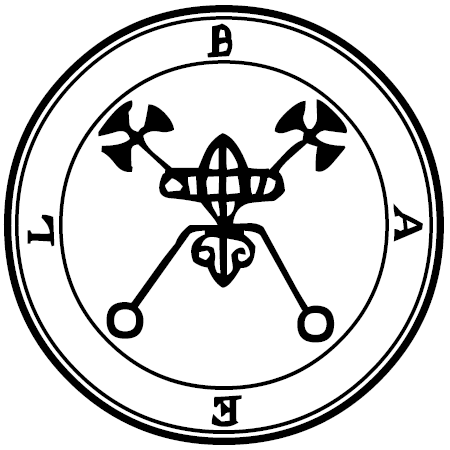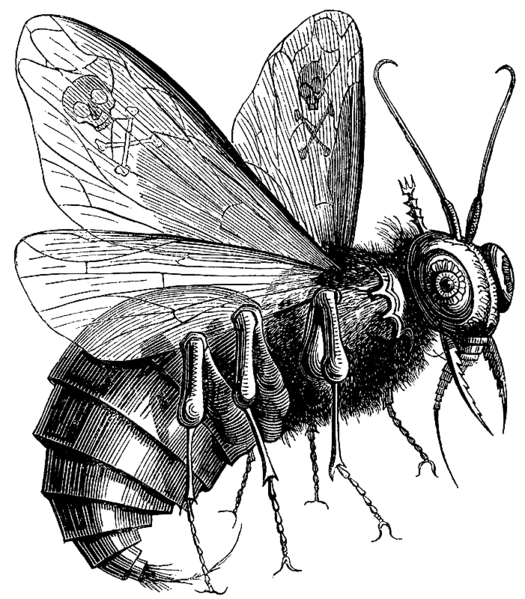Baal is one of the most popularly known deities from the old religions, his name or some variant of his name is often used in reference to a prominent Canaanite god or even in reference to a demon. So who is Baal? How did he gain his associations?
In truth, Baal is a title word from the Levantine Semitic languages meaning “lord” or “owner.” The name was applied to several deities including Hadad, El, and Hammon.
Baal is most commonly identified with storm deities, sky deities, and fertility deities in folk religions. While in the demonic view of him, Baal is associated with things such as popularity and invisibility.

Who Is Hadad?
Hadad is the god of rains and storms that appears in both Canaanite and Mesopotamian religions. Hadad is often symbolized by a bull and is considered similar to other deities such as Zeus, Jupiter, Teshub, Horus, and Set.
Hadad is also called Adad in the Akkadian religion. However, it is believed he was originally introduced to the Akkadians and the rest of Mesopotamia by the Amorites.
Baal Hadad would be identified with the weather, but also sometimes with the sky itself. The Akkadians claimed Hadad to be the Rammanu, the “Thunderer.”
In the Ugaritic tradition, Hadad is the son of Dagon. However, in the account given by Sanchuniathon, Hadad is instead listed as the son of Anu while Dagon is said to be the consort of Hadad’s mother.
According to Baal Hadad’s mythology, he and El were in a conflict with each other at some point. Then some time later, El sends Yamm to fight Baal Hadad and drive him off of his throne. But Baal Hadad wins the fight.
However, Mot, the god of Death and the Underworld, is later insulted by Baal Hadad and challenges him to battle himself. Even Baal cannot escape Death, but with help from his sister Anat, Mot is defeated and forced to recognize Baal Hadad as king.

Who Is El?
El is the supreme god of the Canaanite religion. He is also identified as the supreme god for the religions of most early East Semitic speaking cultures.
According to certain Phoenician mentions, El is sometimes referred to as Baal. This is most likely the usage of Baal as the title, rather than naming him as Baal.
El is also associated with other deities such as Cronus, Saturn, and Anu. The association with Anu, among other things, makes a lot of sense because Anu and El are both considered potential fathers of Baal and are both deities related to the sky.

Who Is Hammon?
Hammon, or Baal Hammon, is the chief god of Carthage. Baal Hammon controls the weather and is also related to fertility and grain, common traits for a deity identified with Baal.
The origin of Hammon is uncertain. The name is variously believed to have either come from the name of a mountain in present day Turkey or perhaps from a syncretic link to the Ancient Egyptian religion and/or the Ancient Libyan religion.
Baal Hammon is traditionally depicted as a bearded man with the horns of a ram. There has been some debate that he may be a solar deity, however there is also a lot of evidence that he is actually a lunar deity.
Baal Hammon’s cult became the dominant cult in Carthage following the separation of Carthage and Tyre in the 400s BC. The Carthaginians credited him with being responsible for causing their vegetation to grow, and there is a possibility that there may have been child sacrifice performed by Carthaginian elites to him although this is heavily debated by scholars even today.
Due to cultural exchange between the Romans and the Carthaginians as a result of the Punic Wars, it is believed by some that Baal Hammon may have been related to the origin of the Roman holiday Saturnalia. Some writers have even gone as far as to call him African Saturn.

Who Is Bael?
When hearing about Baal, it is more than likely that you will hear about Baal’s association with demons or even his identification as one. The demon Baal is most commonly identified as Bael, although Baal or Ba’al can also be used.
The demon Bael is mentioned in The Lesser Key of Solomon and the Pseudomonarchia Daemonum, which were compiled in the 17th century and 16th century respectively (but both contain material going back centuries earlier). Bael is a king with a hoarse voice who gives men the power to become invisible, to gain popularity, and commands over 66 legions of demons.
Bael can appear in the form of a man, a toad, and a cat. He can also appear as a combination of them, and the Dictionnaire Infernal says that he has the heads of all three creatures at the same time.
Bael is identified as both a king and a soldier in the Liber Officium Spirituum. In that grimoire, Bael was also identified with science and love.

Are Baal And Beelzebub The Same?
In the Second Book of Kings, a deity named Beelzebub (or Ba’al Zebub) is identified as a Philistine deity. His name directly translates to “Fly Lord,” but it is more accurate to call him “Lord of the Flies.”
Jewish scholars have believed this name “Lord of the Flies” may have been an insult the Hebrews were using against Baal and his followers rather than the actual name of the deity in question. However, the Philistines were not originally native peoples of Canaan which draws some other elements of this into question.
In Ugaritic, it would be spelled B’l Zbl and would have meant “Prince Baal.” This provides another possible origin for the name that is much less insulting.
The Beelzebub from the Second Book of Kings appears to have an association with pestilence and medicine. King Ahaziah had tried to ask Beelzebub if he would heal from a fall.
Beelzebub also has associations with demons, sometimes even being considered another name for Satan himself. In the Testament to Solomon, Beelzebul (as it is spelled in that text) reveals himself to be prince of the demons and says that he was formerly the angel of Venus which builds a link between himself and Lucifer.
Beelzebul claims to bring about destruction through tyrants and promote demon worship among men. He also brings about lust, jealousy, and war.
In the books of Matthew, Mark, and Luke, Jesus is at one point accused of using the power of Beelzebub to drive out demons. The New Testament seems to identify him as the devil.
In many Christian and Gnostic traditions, Beelzebub is usually considered to be a very high ranking demon. He is often called the chief lieutenant to the devil himself.
In John Milton’s Paradise Lost, Beelzebub is part of the Unholy Trinity with Lucifer and Astaroth. Beelzebub is also considered the second ranking of all fallen angels and sits the highest above all in their ranks save for the devil himself.
